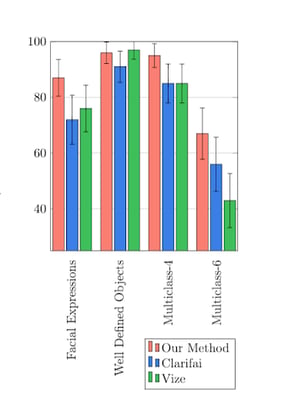.png?width=1920&height=1080&name=7%20Best%20Digital%20Asset%20Management%20Software%20Platforms%20(2).png)
The latest research on Artificial Intelligence and DAM
Here at Asset Bank, we have always held an interest in the potential of Auto Tagging. As you may remember, we looked into the capabilities of AI and image recognition in aiding the addition of metadata to your images. Looking back, we learned that it wasn’t ready to provide enough benefit for a majority of DAM users, but it held a lot of hope.

Things have moved on since then. So much so that we launched a new feature in Asset Bank - Auto Tagging. By integrating with Amazon Rekognition, we were able to harness the power of AI in DAM. This functionality, as you probably guessed, automatically tags keywords to digital assets as they are uploaded into your Asset Bank. We think this is really useful for clients who upload a high volume of images at a time, or for those that have a big data migration exercise on their (lucky) hands!
Whilst we are confident that this new feature is adding value and saving time for our clients, we always know that there is room for us to do better. So, we were thrilled to be approached by academics at the Research Centre for Secure, Usable and Intelligent Systems at the University of Brighton, Karina Rodriguez and Ran Song, who have expertise in visual content and Machine Learning (AI) technologies and are just down the road from us. We started a research project together to explore the scope of AI and DAM, most specifically to understand its potential and current limitations.

Right now, third-party APIs are trained on very generic images that are found on the internet, and have everyday items in them (think mountains, laptops, coffee, beaches, people). Whilst this is useful in many cases, we realise that this becomes a problem for clients dealing with very specific and unique images. This is because AI has not been taught how to classify them.
The Project
So, we were aware of the limitations, but we wanted to compare existing AI systems with a system that we custom built. Are these existing products trainable? Can AI recognise abstract concepts if they are trained and exposed to them? These are a few of the questions we were all asking ourselves.
We used data from a variety of sets including one from WaterAid - a client of ours - to compare the systems. These data sets included images containing more complex/specific components. For example, some photos displayed various people smiling. We wanted to see how the systems dealt with detecting smiles, as this is something very intuitive to humans and yet a difficult task for computer vision.
The project consisted of two phases:
- For 2-3 weeks, Chris (a member of the project team from Brighton Uni) trained a custom-built system with some data sets (e.g. those of WaterAid’s) featuring specific concepts in order to understand the accuracy of the system.
- Another week was spent comparing the on-the-shelf software products (e.g. Clarifai and Vise) with his own shiny-new custom system.
The results explicitly reveal a higher performance in detecting complex concepts from our customised system. This is largely because it was trained with the complex images.

So, by and large, the project confirmed our sneaky suspicions: the available current systems simply are not intelligent enough to deal with specific terms, unique to different clients. You might be thinking ‘why did you embark on this project if you already knew the answer?’. This is a fair point, but it was important that we could make confident conclusions and investigate it further. There is more to it than that though.
Lessons Learned/ Reinforced:
AI is still clever!
- Results showed the power of existing AI solutions in recognising more well-known items and reinforced the benefit of using it even if you do have complicated images.
- We can train custom-built machine learning systems using clients own data, rather than online services that have not been trained. This is a key finding because it paves the way for the future.
Customisation is key
- For AI to enable complex auto tagging and image recognition, it needs to be a customised system
- Customisation relies heavily on the sharing of clients data - their digital assets in this case. The digital assets are used to train their customised system.
- This would demand an incredibly collaborative approach between the clients and, not only their DAM provider, but also those building their system. Some clients might feel that this outweighs the benefits of optimised image reading.

It’s not just humans who have difficulty interpreting Abstracts.
- The project revealed that identifying complex concepts such as tagging a boy actually as a male teenage student can be a difficult task for a computer. However, we normally rely on social and cultural constructions or concepts that are abstract/subjective to describe things we see in everyday life, making image classification even more difficult.
- For example, the AI system was able to determine smile vs no smile - a challenge for a computer - relatively well after training. However, identifying a mother within a picture became near impossible. What determines a Mother in a photo? Even as humans, we might interpret a photo differently. Which brings me on to….

Humans still have control
- Perhaps less relevant to the power of AI, Karina explained her surprise at the wide range of abstract/subjective terms clients often used to classify images. She said that ‘training a computer to learn certain classifications becomes even more tricky when different people choose different components of an image to classify it’.
This has been an insightful project and it has suggested some possible directions to move toward for future development. We are confident, however, that the AI currently in use still provides substantial benefit for a lot of different clients and audiences.
And one last thing...
Please feel free to read the report on this project if you would like to delve into the details.


